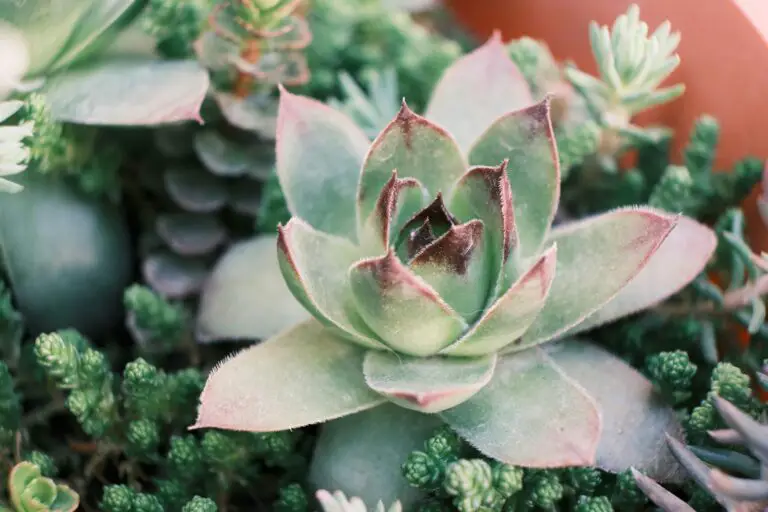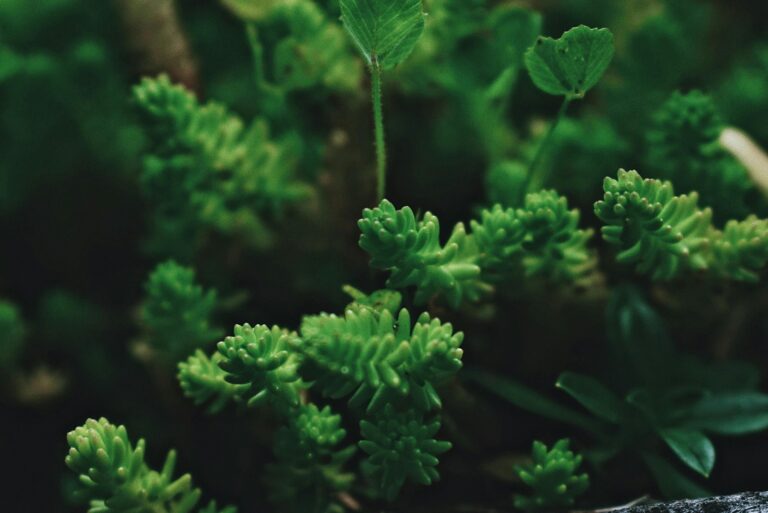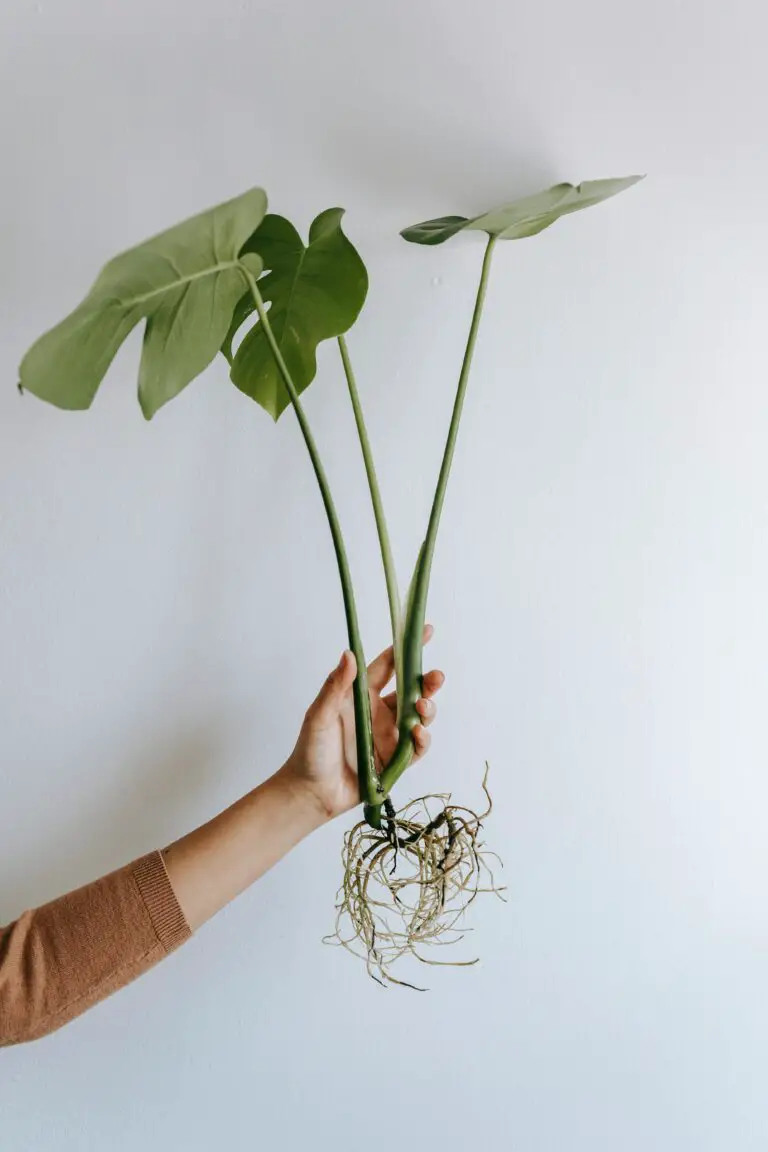Understanding Sedum: An Overview
Are you familiar with the stunningly versatile genus known as Sedum? These succulent plants, colloquially dubbed “stonecrops,” have gathered a loyal band of green-thumbed enthusiasts. Why? Their knack for adorning gardens with minimal fuss. Sedum varieties run the gamut from ground-hugging stunners to upright botanical beacons, making them a staple in the ‘easy-care’ corner of any plant nursery.
Imagine this: a drought-loving plant that demands mere crumbs of attention yet bursts into a dazzling floral display when the sun reigns supreme. That’s sedum for you, ready to transform a rocky nook or a polished modern landscape with equal aplomb. Not to mention, these rugged beauties brave conditions that would leave other plants wilting in defeat. A rock garden adorned with sedums isn’t just a garden; it’s nature’s mosaic that weathers the storm!
Their inherent robustness makes them perfect candidates for sprucing up the home garden or even spinning magic in public spaces. Their vast array of forms, from the spiky Sedum rupestre to the widely treasured ‘Autumn Joy’, there’s a sedum out there for every garden narrative. So, whether you’re looking to craft a groundcover tapestry or yearn for a pop of autumnal color, sedum plants are your horticultural pixie dust.
Indeed, the sedum saga is rich with botanical charm, but the question lingers: To pinch or not to pinch? If visions of fuller, bushier sedums are dancing in your head, you just might be on the brink of a garden epiphany. But before you embark on this journey of succulent enlightenment, let’s immerse ourselves in an insightful video that illuminates the varied world of sedum.
To Pinch or Not to Pinch: The Debate
When it comes to the lush foliage and robust growth of sedum plants, garden whisperers often find themselves at a crossroads: to pinch or not to pinch, that is the question. It’s almost like a scene from a Shakespearean drama, but instead of pondering existence, we’re considering the very vitality of our beloved succulents. With the health, aesthetics, and intricate growth patterns of sedum in mind, we sashay through the garden of opinions.
Imagine you’re walking through a succulent sanctuary, and your eyes lock onto a sedum that’s just beginning to resemble a tall, skyscraping city dweller. What to do? For some, pinching back such ambition is a non-negotiable, a kind of plant-size management akin to urban planning for green spaces. It’s believed that a gentle pinch encourages sedum to grow denser, bushier, and with a vigor that spreads joy rather than shooting skyward. It’s not just about keeping the plants from getting ‘leggy’; it’s about fostering a picturesque, postcard-ready garden scene.
Opponents of the pinch, however, have their say—why fix what isn’t broken? They argue that sedum, with its easy-going spirit, prefers the laissez-faire approach. Let nature run its course and watch as the plant naturally cascades to form a tranquil green waterfall in your garden. These folks nurture a picture of beauty that lies in the wild and naturally sculpted shapes of sedum in full, unrestrained glory.
But this isn’t just hearsay; the debate digs deeper into practicality. Visualize your garden with sedum left to grow untamed; it’s an ode to natural beauty but can sometimes come at the cost of an unruly silhouette that may plead for some shape and form. So, it’s not just about what meets the eye; the pinch-back protagonists assert that this simple act can prevent the plant from toppling over under its own weight, and the sedum becomes a more resilient denizen of your garden.
Take a leaf out of the practical gardener’s book—pinching back sedum might indeed lead to lavish lands. But, don’t take my word for it; check out this enlightening video that sheds some light on the “Quick Fixes for Leggy Succulents,” revealing how you can promote thicker growth and more robust plants.
Now, to toss another pebble into the pond of thought, what about those who’ve seen their sedum suffer post-pinch? Is it possible we’re clipping away at their potential? Should we observe and learn, and maybe discover a middle path that heeds the individual needs of each succulent?
Before you decide to snip or skip, why not meander through some additional succulent care tips? After all, a gardener’s quest is never complete—there’s always more to unearth in the journey to the lush, thriving embrace of Mother Nature.
In the garden of sedum deliberations, there’s fertile ground for diverse schools of thought. To pinch or not to pinch, the question lingers like the sweet scent of soil after rain. Whichever side of the garden fence you find yourself, remember that each choice bears fruit—sometimes quite literally—in the flourishing tableau that is your garden.
Benefits of Pinching Back Sedum
Imagine a full, lush succulent garden, sedum standing proudly with bushels of vibrant blooms—this is the power of a simple pinch! Gardeners far and wide whisper about the magic of pinching back their sedum plants to transform scraggly stems into a gardener’s lush dream. But the science behind the whispering is as solid as the succulents themselves.
When we talk about pinching back, we’re simply referring to the act of snipping the growing tips of your sedum plants. Why? Because it encourages the plant to branch out sideways rather than just shoot up vertically. This bushier growth offsets the dreaded legginess that so many succulent lovers fear. Picture how a skilled painter adds dimension to a flat canvas—that’s what you’re doing to your sedum, giving it shape, depth, and character.
Let’s not forget the blooms! More branches mean more tips, and more tips mean more blooms. It’s a numbers game that nature rewards with a bounty of flowers. It’s important to understand that sedum, while hardy, also thirsts for the right kind of attention to unlock that flowering potential. One study found that with the right care, sedums could flower through three seasons, igniting a parade of pollinators in your garden.
Real-life green thumbs agree—pinching back your sedum isn’t just garden lore, it’s a tried-and-true technique. Take Elise, for example, a seasoned gardener in the Pacific Northwest. By early summer, she pinches back her ‘Autumn Joy’ sedum by about one-third, and come fall, her garden is a spectacle of lush foliage and starry blooms, often until the first frost.
Of course, seeing is believing. To get a real sense of this transformative process, here’s a helpful video detailing how sedum enthusiasts manage these robust beauties:
The takeaway here is plain and simple: if you want a sedum that’s the envy of the neighborhood, get pinching! It’s a little effort for a dramatic effect. Soon, instead of thin, spindly sedum waiting shyly in the wings, you’ll have star performers ready to take center stage in your garden’s show.
When to Pinch Back Your Sedum
Knowing when to pinch back your sedum can turn your garden into a theatre, with lush, dense succulents taking center stage. Imagine strolling through a garden, your eyes drawn to a spectacular display of sedum plants, their foliage so thick and vibrant you can’t help but reach out to touch them. This isn’t just a scene from a gardening magazine; it’s the magic you can create in your own green space with a simple gardening technique known as pinching back.
But hold on, not any random Tuesday will do for this task. The timing is as essential as the act itself. You’ll want to mark your calendars for the onset of the growing season, typically in the spring for many climates. As soon as you see those fresh green shoots saying hello to the sun, count to about four to six inches of growth, and that’s your green light – time to pinch! It’s a bit like giving your sedums a pep talk, telling them to branch out and live a little. Be sure to check out this inspirational guide on perfecting your pinching talents.
A pinch here and a pinch there is not just about shape; it’s about encouraging a fuller, bushier plant. Picturing a sedum that stands tall without flopping over? This is your garden hack! If Mother Nature allows, and you’ve timed your trimming just right, you’ll be the proud cultivator of some truly impressive sedum by late summer or early fall, when their flowering glory is in full swing. Our fellow gardeners swear by this, and I’ve seen it work wonders with my own two hands.
If you need a more visual guideline, don’t miss this instructional video which can show you the ropes on how to achieve that lush sedum growth everyone’s pining for:
Speaking of guidance, we’ve got a cornucopia of succulent wisdom right here on our site. Explore our comprehensive guide on growing and caring for sedum to master your succulent game.
Remember, pinching back your sedum isn’t just about aesthetics; it’s a strategic move to enhance your plant’s vitality. The act might seem small, but it’s mighty, encouraging branching that leads to a hardier, more robust plant. So go ahead, give your sedum the little nudge they need. They’ll thank you with a spectacular show of resilience and beauty!
How to Pinch Back Sedum: A Step-by-Step Guide
If you’ve ever found yourself swooning over the fullness of a lush sedum plant, you may have stumbled upon a green thumb’s well-kept secret: pinching back. Yes, believe it or not, getting hands-on with your sedum can encourage a bushier vibe that’s downright enviable in the succulent world. Ready to roll up your sleeves? Let’s dive into the nitty-gritty of pinching back your sedum.
The Pinching Back Primer
First things first, what does it mean to pinch back a plant? It’s simple: You’re giving your sedum a gentle nudge to say, “Hey, let’s put a pause on upward growth and get a little fuller on the sides.” It’s like coaxing the plant to put on its best show of foliage and blooms by slightly redirecting its energy. Now, before you go on a pinching spree, make sure you have the right tools for the job. Clean, sharp scissors or your own fingertips—yes, those work too—are your go-to implements. The trick is in the technique, not the tool.
Sedum’s Soft Spots: Where to Pinch
Spotting where to pinch is like finding the perfect place to sit in a crowded garden party; look for the young, soft growth at the tips of the stems. That’s your sweet spot. Gently grasping the stem between your thumb and forefinger, take a moment to feel the plant’s rhythm. You’re looking for the part that feels almost tender, signaling new life and potential. With a swift pinch or snip, remove the top inch or two—just above a leaf or bud. Congratulations, you’ve just initiated a sedum’s branching bonanza!
Tips to Save Your Sedum from Snipping Stress
Even the bravest of sedum plants can get a tad bit stressed when pinched back. To keep your succulent smiling, timing is everything. Aim to pinch in the late spring or early summer, when the plant is hitting its growth stride. Doing so provides plenty of time for the sedum to recover and flourish before it needs to hunker down for winter. Also, keep the “less is more” mantra in mind; over-pinching can lead to a stunned sedum rather than a bushy beauty.
Real-Life Pinching Panache
Imagine you’re at a lively plant party—everyone’s stretching towards the sun, waving their leaves to the beat of the breeze. There’s your sedum, reaching up, eager to greet the day. With a pinch here and a pinch there, you’re not stifling its spirit; you’re encouraging it to spread out, to grow confident in its own plush, robust form. And trust me, when visitors wander into your garden and gasp at its fullness, you’ll know those little pinches paid off.
Curious to see the pinching process in action? Check out this handy video that walks you through the steps, giving you the visual cues to perfect your technique. Just one look, and you’ll be pinching back your sedum like a pro.
Remember, friends don’t let friends have scrappy sedum. With each thoughtful pinch, you’re elevating your succulent game, turning that sedum into a neighborhood showstopper. Now, go forth and pinch with purpose!
Caring for Your Sedum Post-Pinching
Imagine giving your sedum a little haircut, and now it’s time for the pampering phase to kick in—yes, we’re talking about sedum aftercare following a pinch-back. First, let’s shower your greenie with the love it needs. Watering is like hydrating after a good workout; it’s crucial, but moderation is key. Wait for the soil to dry out before you bring on the rain. Think thirsty camel, not drenched duck. Your sedum’s roots will thank you for it, forging deeper into the soil and building a stronger base.

Next up, feeding time! While our succulent friends aren’t gluttons, they do crave a bit of nourishment to flourish post-trim. A half-strength, balanced fertilizer is like a gourmet meal for them. Serve it up once a month during the growing season, and you’ll see your sedum strut its stuff with vibrant, plush foliage comparable to a botanical version of a luxuriant shag rug.
Finally, let’s play pest patrol. Keep a vigilant eye out for the uninvited guests who think your sedum is an all-you-can-eat buffet. Aphids, mealybugs, and the like can sashay in unannounced, and it’s not to compliment your gardening skills. Regular checks will keep your plants as pest-free as a clean kitchen keeps away ants. If invaders are spotted, it’s showtime for organic insecticidal soap—the bouncer of the garden world. No pests means your sedums can continue to party—er, grow—in peace and splendor.
Incorporating these simple yet effective aftercare steps will ensure that ‘should sedum be pinched back’ is not just a question, but the start of a journey to a more robust and eye-catching garden display, where your sedum takes the center stage with its lush, succulent growth.
Potential Drawbacks of Pinching Back
While pinching back your sedum can encourage a fuller, more compact shape, it’s not without its risks. It’s like walking a tightrope; lean too far one way, and you might send your beloved plant into a stress-induced frenzy. Too much of a good thing, like snipping too eagerly, can lead to over-pruning—a real possibility if you get a bit scissor-happy.

Imagine you’re giving your sedum a haircut with the hopes of it growing back thicker and lusher. But just as a bad haircut can leave us hiding at home, improper pinching can leave your sedum looking sparse and unhappy. Overzealous pruning can reduce the plant’s ability to photosynthesize by removing too many leaves, which can stunt growth rather than promote it.
Also, consider the timing of your pinching action. Doing it too late in the season can leave your sedum scrambling to recover before the cold weather sets in. Think of it like sending a runner into a marathon with no training—it’s a recipe for a plant that’s underprepared for winter’s harsh realities.
Another potential pitfall is inviting diseases or pests to the pruning party. Every snip creates an open wound, and if it’s not done correctly or at the right time, you might as well roll out the red carpet for any opportunistic infections looking for a new home. It’s crucial to use clean, sharp tools to make clean cuts that heal quickly.
Don’t forget about the stress factor. Like people, plants can get stressed, and the physical shock of pruning can trigger a survival mode in sedum. This can lead to a redirection of the plant’s energy towards recovery rather than growth, which sometimes means fewer blooms and a less robust plant come spring.
Analyzing these potential drawbacks isn’t meant to scare you away from pinching back your sedum—far from it. It’s about being informed and strategic, so you can help your green friend thrive without the unintended consequences. So, take a deep breath, sharpen those pruning shears, and approach your sedum with a mix of enthusiasm and caution.
Frequently Asked Questions
Whether you’re a seasoned green thumb or a budding gardener, the techniques for achieving that magazine-worthy sedum display can sometimes be a bit of a mystery. Let’s dig into some common curiosities about pinching back your sedum plants!
Why Does My Sedum Get Leggy?
Leggy sedum often occurs when they’re crying out for more sunlight. Think of those long, spindly stems as skyscrapers reaching for the sun! Sedum prefers to lounge in full sunshine, and without enough rays, they’ll stretch and reach, resulting in a less-than-lush appearance. Consider relocating them to a sun-soaked spot, and you’ll notice them filling out like a sunbather on a July afternoon.
How Often Should I Pinch Back My Sedum?
Timing is everything! Pinching back your sedum is like giving it a gentle nudge to branch out. Do this in early spring, as new growth appears, and again in early summer, if necessary. The trick is not to overdo it — think of it as a subtle art, like pruning a bonsai tree. You’re guiding your sedum toward its fullest potential, one pinch at a time.
Do All Sedum Varieties Respond the Same to Pinching?
Just like people, sedum comes in diverse varieties, each with its personality. Some sedum, like the stalwart ‘Autumn Joy’, react to pinching like a champion, with vigorous new growth and a full-bodied shape. Others, particularly creeping or miniature types, may not need pinching at all. Their natural inclination is to stay low and spread gracefully. So, get to know your sedum variety – it’s the key to unlocking its beauty!

To sum things up: Keep an eye on your sedum and provide adequate sunshine, pinch with purpose (but not too often), and be mindful of the unique growth patterns of your sedum variety. With these tips, you’ll be on your way to nurturing a sedum garden that is the envy of the neighborhood!



